The Mongolian language - High quality translations by professionals
The Mongolian language is the official language of Mongolia, and spoken by six million people. It’s also spoken in parts of Russia and in regions of China, and it’s believed to belong to the Altaic language family.
Mongolian consists of several dialects, including Chakhar, Kharchin, and Oirat. Linguists count further sub-dialects as a part of Mongolian, including the dialect groups of the Jerim, the Juu Uda, the Ulan Tsab, and the Shilingol, as well as those in Outer Mongolia.
Instant quote
The syllable structure is simple, and there are seven vowels. Mongolian has no articles, and the verb is always at the end of the sentence.
The development of the written language goes back to the vertically written Old Uyghur alphabet created by a scribe named Tatar-Tonga. He had been taken as a prisoner of war and was tasked by the Mongol leader, Genghis Khan, to develop a script for his people. He did as he was told and adapted his script to the specific characteristics and qualities of the Mongolian language. This Mongolian script is still used in parts of Mongolia today.
Instant quoteBuddhist monks created many different forms and variants of the script, and some of these subtypes are still used by tribal groups in Asia. Old documents that have remained preserved since this time period are inscriptions on stone. However, the Mongolians also used the Arabic, Tibetan, and the Chinese scripts to put their ideas in written form.
The Mongolian language today
Just before World War II, the Latin alphabet was adopted and implemented in Mongolia. However, soon thereafter, the Soviet Union began to exert pressure on Mongolia to use Cyrillic, which is now the official alphabet of Mongolian.
The classic Mongolian script is being taught in schools, even though it holds no official status. It only serves symbolic purposes.
Do you need a flawless Mongolian translation?
Our translators are not only professionally trained in the art of translation, but they each specialize in a particular field or industry. That way, they can understand the context and terminology of the documents they translate.
They are also native speakers who have spoken Mongolian as their native tongue throughout their lives. We will, of course, choose a translator who is fluent in your originating language, whether English, Spanish, French, or another language.
If you have a birth certificate or other official document from Mongolia that you need translated and certified – whether into English or another language – we can do that for you, too.
Just contact our project managers via phone, email, or the form, and we’ll promptly send you a quote at no obligation. We’re certain you’ll be happy with the price and will want to let us show you what we can do.
If you’re in need for a translation of an official Mongolian document, we can help you in our webshop for certified translations.
Read more:
| United Kingdom | Mongolian |
| Sverige | Mongoliska |
| Österreich | Mongolisch |
| Danmark | Mongolsk |
| Schweiz | Mongolisch |
| United States | Mongolian |
| Nederland | Mongools |
| Suomi | Mongolia |
| Deutschland | Mongolisch |